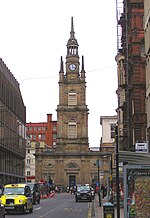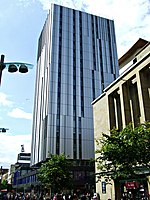Royal Faculty of Procurators in Glasgow

The Royal Faculty of Procurators in Glasgow is a professional body of legal practitioners based in Glasgow and providing services to lawyers in the city and the surrounding area. The Faculty owns and operates the largest law library in the West of Scotland as well as a small branch library at Glasgow Sheriff Court, and runs a programme of continuing professional development (CPD) seminars. The Faculty is similar to the Society of Writers to Her Majesty's Signet (WS Society), a professional association of solicitors which maintains the Signet Library in Edinburgh, however these bodies play no regulatory role for their members, only providing services, and should be distinguished from the Law Society of Scotland and Faculty of Advocates, which are the respective regulatory bodies for solicitors and advocates in Scotland.
Excerpt from the Wikipedia article Royal Faculty of Procurators in Glasgow (License: CC BY-SA 3.0, Authors, Images).Royal Faculty of Procurators in Glasgow
West George Street, Glasgow Cowcaddens
Geographical coordinates (GPS) Address Nearby Places Show on map
Geographical coordinates (GPS)
| Latitude | Longitude |
|---|---|
| N 55.8622 ° | E -4.2546 ° |
Address
West George Street
West George Street
G2 1QG Glasgow, Cowcaddens
Scotland, United Kingdom
Open on Google Maps









